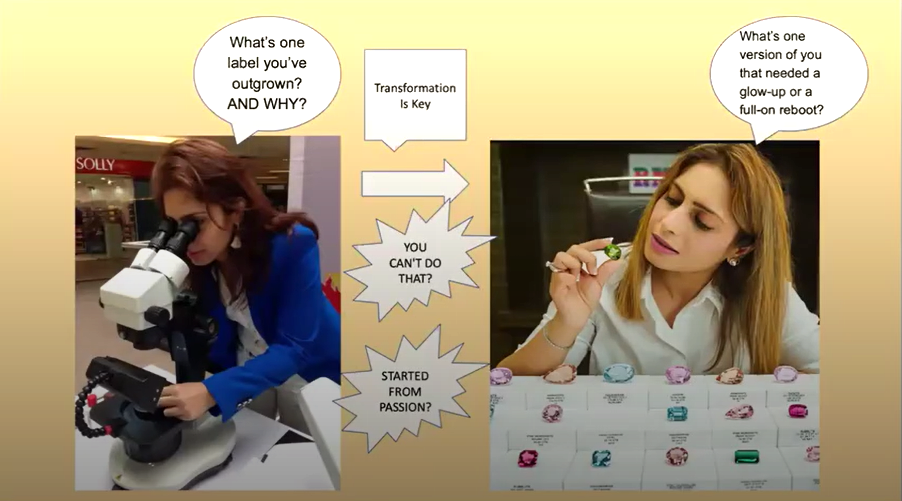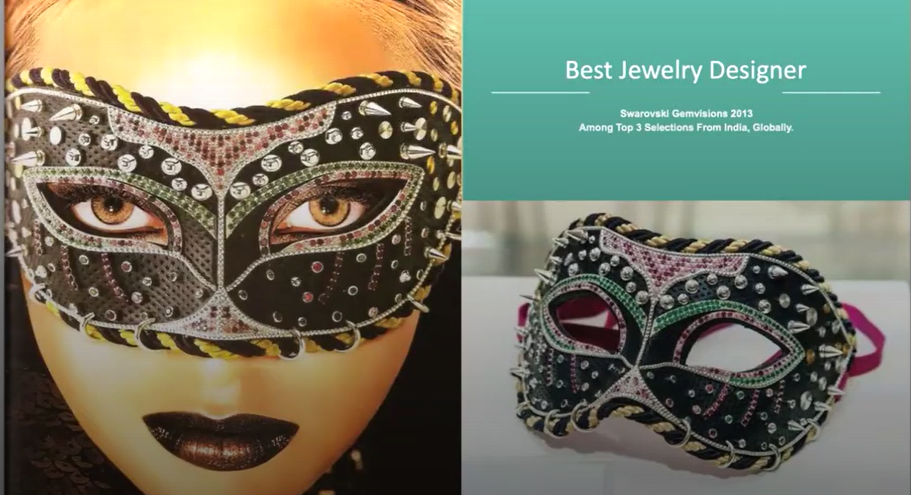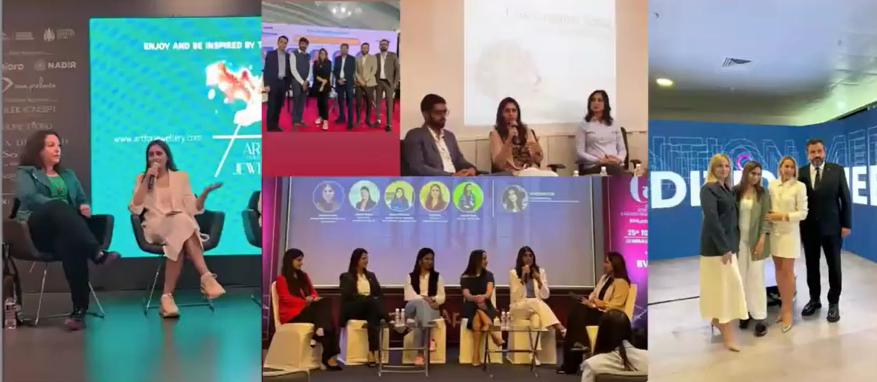In today’s fast-moving creative world, design is no longer a straight-line journey. New technologies, shifting market needs, and evolving cultural tastes mean designers can’t stay static. Growth comes from being open to change, learning continuously, and embracing challenges as stepping stones.
Our recent DCLS session with Prernaa Makhariaa, India’s first jewellery influencer, brought this to life. Through her shift from commerce to jewellery design, corporate roles to creative entrepreneurship, she showed how reinvention fuels relevance. Here’s a takeaway from her story and why transformation, skill-building, and adaptability are the invisible engines of a designer’s journey.
1. Transformation: The Courage to Redefine Yourself
Transformation is more than upgrading your portfolio; it’s about upgrading your identity as a designer. The myth that you need a formal design background to succeed in the industry is slowly being dismantled. Creative roles today are more open to diverse voices — people with unique life experiences, different educational backgrounds, and fresh perspectives. As a designer, you should have the confidence to let go of what no longer serves your vision and step into a space that feels unfamiliar but promising. Many creatives fear that changing direction will mean “starting from scratch,” but in reality, each shift builds on the experiences before it.

The speaker explained this through her own journey — starting in commerce, moving into jewellery manufacturing and merchandising, and later transitioning into styling, blogging, and influencing. Each shift didn’t replace her existing skills; it expanded them. By welcoming change rather than resisting it, she shaped a career path that’s entirely her own.
2. Skill-Building: Expanding Your Creative Toolkit
In today’s context, creative professionals often wear multiple hats. Knowing how to style, communicate visually, build a brand, or even understand manufacturing processes can set you apart. Skills are your language, and learning to speak more than one gives you power in a saturated industry. The design world rewards those who keep adding new layers to their abilities. A skill learned today might become the bridge to your biggest opportunity tomorrow. Staying curious, experimenting with new techniques, and learning from different industries all contribute to creative depth.
Prernaa’s journey shows how diverse skills can merge into a single powerful career. From technical know-how in jewellery design to the creative flair of styling, from digital marketing to brand storytelling, she didn’t stop learning. Her ability to combine these skills led to designing collections like Myra and collaborating with renowned brands such as Swarovski.
3. Adaptability: Thriving Through Change
Adaptability isn’t glamorous, but it is essential. It is the superpower that lets designers survive market shifts, industry disruptions, and personal reinventions. It’s about understanding the need or the market demands and adjusting your approach without losing your creative core. Creative breakthroughs often emerge when plans fall apart. Innovation rarely grows in comfort; it thrives in the moments you choose to adapt instead of stall. Discomfort, in this sense, isn’t a setback; it’s a signal that growth is happening.

The speaker highlighted how her adaptability stood out during the pandemic, when the jewellery industry slowed dramatically. Rather than waiting for conditions to improve, she created her own opportunities — designing a Swarovski mask that drew attention, and engaging audiences through digital content and collaborations. Her readiness to shift strategies kept her not only relevant but also in demand.
4. Storytelling: Connecting Beyond the Product
In a creative industry, the story behind a design can be just as valuable as the design itself. Storytelling gives a creation emotion, meaning, and a sense of connection; it’s what makes people care. A well-told narrative can turn a product into an experience, a purchase into a personal connection. Great designers don’t just create objects; they weave stories that invite people to see, feel, and belong.

Prernaa explained that her work has always been anchored in strong narratives. Whether it was sharing the inspiration behind Myra, highlighting artisans’ craftsmanship, or curating events like the Cartier book signing, she used storytelling to build trust, admiration, and community around her work. Her success shows that storytelling isn’t an accessory to design; it’s part of the design.
At ARCH, we believe that design education is as much about real-world inspiration as it is about classroom learning. Our Design Culture Lecture Series (DCLS) brings industry leaders, innovators, and trailblazers to share their journeys, insights, and lessons that go beyond textbooks. The recent session with Prernaa Makhariaa was a powerful example that offered aspiring designers a firsthand look at how transformation, skill-building, and adaptability can shape a fulfilling creative career. To know more, also read our blog on why multidisciplinary portfolios are the future. Join us at ARCH, and be part of a learning culture that prepares you for the ever-evolving design world.
